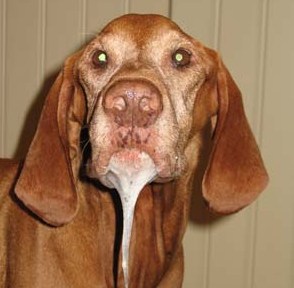A breed specific muscle disease known as VIZSLA INFLAMMATORY POLYMYOPATHY (VIP) has been recognised The principal clinical signs are
- swallowing problems
- excessive foamy drooling and
- muscle wasting (especially around the head)
We need to hear from any vizsla owner, breeder or vet that has had experience of the disease.








